#Rebuilding livelihoods after COVID-19
Text
From Triumph to Tragedy: COVID-19's Devastating Blow on Poverty Eradication
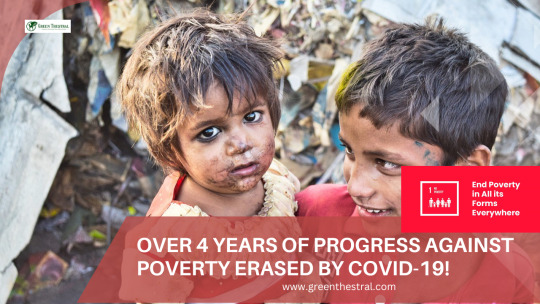
The year 2020 will forever be remembered as a time of unparalleled upheaval, as the COVID-19 pandemic took the world by storm, leaving behind a trail of destruction in its wake. Beyond the tragic loss of lives, the pandemic also unleashed a devastating blow on the global economy and disrupted social systems, derailing the remarkable progress made against poverty over the past four years. The journey towards eradicating poverty that had shown promising strides now stands overshadowed by a daunting reality. This article delves into the impact of COVID-19 on poverty eradication efforts, examining the setbacks, challenges, and potential pathways to recovery.
The Pre-COVID Progress
Before the pandemic struck, significant strides had been made in the battle against poverty. Numerous developing countries had reported declining poverty rates, improvements in education, and better access to healthcare. Global organizations like the World Bank and the United Nations were optimistic that we were moving closer to achieving the Sustainable Development Goal of eradicating extreme poverty by 2030.
Governments, NGOs, and philanthropic organizations were working together, implementing targeted interventions to lift millions out of poverty. Investments were being made in education and vocational training, empowering individuals with skills to secure better-paying jobs. Microfinance initiatives provided small loans to entrepreneurs, fostering local economic growth and self-sustainability. Moreover, access to healthcare has improved through the expansion of health facilities and immunization programs.
The Unforeseen Blow of COVID-19
Enter COVID-19, and the world witnessed an unprecedented human and economic crisis. Lockdowns, travel restrictions, and social distancing measures were put in place to curb the spread of the virus, leading to the shutdown of businesses, the loss of jobs, and disruptions in supply chains. The most vulnerable segments of society were hit hardest, plunging many back into poverty.
Informal workers, day laborers, and those in the gig economy were left without job security or access to social safety nets. Women, who had made significant strides in the workforce, faced a disproportionate burden as they juggled work, childcare, and household responsibilities during the lockdowns.
The Toll on Global Poverty
According to the World Bank, the COVID-19 pandemic pushed an estimated 100 million people into extreme poverty in 2020, erasing more than four years of progress against poverty eradication. The setback was particularly severe in Sub-Saharan Africa and South Asia, where poverty rates surged due to the combined impact of health and economic crises.
School closures further exacerbated the situation, with millions of children unable to access education. This could have far-reaching consequences, as education is a crucial pathway to breaking the cycle of poverty. The disruption in education has the potential to create a lost generation of children who are deprived of the knowledge and skills they need to thrive in the future.
The Hidden Toll on Women
COVID-19 also exposed and amplified existing gender inequalities. Women, who often bear the brunt of poverty, found themselves at the frontline of the pandemic response, comprising the majority of healthcare workers and caregivers. Simultaneously, job losses and economic hardships disproportionately affected women, pushing them deeper into poverty.
Moreover, there was a surge in gender-based violence during lockdowns, as victims were confined with their abusers and faced barriers to seeking help. The pandemic further underscored the urgency of addressing gender disparities and promoting women's empowerment as critical components of poverty eradication efforts.
The Struggle for Access to Healthcare
The pandemic highlighted the glaring gaps in healthcare access and infrastructure in many developing countries. Overwhelmed healthcare systems struggled to provide adequate care to COVID-19 patients while maintaining essential health services for other diseases. This left millions without access to basic healthcare and life-saving treatments.
The economic fallout from the pandemic also affected funding for healthcare, diverting resources away from vital health initiatives. Immunization programs suffered, leading to potential outbreaks of preventable diseases that could disproportionately impact vulnerable communities already reeling from the pandemic's effects.
Climate Change and Poverty: A Two-Front Battle
As if battling a global pandemic was not challenging enough, countries also faced the looming threat of climate change. Climate-related disasters such as hurricanes, floods, and wildfires increased in frequency and intensity, exacerbating poverty and displacing communities.
Vulnerable populations living in low-lying coastal regions or arid areas faced the brunt of climate change impacts, losing their homes and livelihoods. The dual challenges of climate change and poverty necessitate urgent and integrated efforts to build resilience and reduce vulnerability.
A Call for a Resilient Recovery
While the road to recovery may seem daunting, there are glimmers of hope on the horizon. Governments, international organizations, and civil society have an opportunity to build back better, ensuring that the recovery from the pandemic is sustainable, inclusive, and resilient.
Investments in healthcare and social safety nets are crucial to ensure that vulnerable communities are better prepared to weather future crises. Rebuilding livelihoods through job creation, vocational training, and microfinance initiatives can empower individuals to lift themselves out of poverty.
Harnessing Technology and Innovation
The pandemic accelerated the adoption of digital technologies, showcasing their potential to bridge gaps in education, healthcare, and financial services. Leveraging technology and innovation can play a pivotal role in reaching marginalized populations and addressing systemic inequalities.
Mobile banking, telemedicine, and e-learning platforms can enhance access to essential services, particularly in remote areas. Moreover, investments in renewable energy and sustainable infrastructure can create jobs while combating climate change, fostering a greener and more inclusive economy.
Global Solidarity for Lasting Change
COVID-19 has underscored the interdependence of nations and the need for global solidarity in addressing poverty and other global challenges. It is essential for developed nations to support developing countries through financial aid, debt relief, and technology transfer to ensure an equitable recovery.
By collaborating on research, sharing best practices, and working towards common goals, the world can emerge from this crisis stronger and more prepared to confront future challenges. International cooperation is key to ensuring that the progress against poverty does not suffer further setbacks in the face of unforeseen adversities.
Conclusion
The impact of COVID-19 on poverty eradication has been nothing short of devastating. More than four years of hard-won progress has been erased, leaving millions trapped in the cycle of poverty once again. However, the pandemic has also shown the resilience of individuals, communities, and nations in the face of adversity.
As we navigate the uncertain terrain ahead, it is crucial for us to learn from the lessons of the pandemic and forge a path towards a more inclusive and sustainable future. By addressing the underlying issues of poverty, inequality, and climate change, we can build a world that is better equipped to withstand and overcome future challenges, ensuring that the progress against poverty is not only restored but accelerated. Together, we can rise from the ashes of this crisis and create a world where no one is left behind.
What's In It For Me? (WIIFM)
In this eye-opening blog article, you'll discover the harsh reality of the COVID-19 pandemic's impact on poverty eradication efforts. Learn about the setbacks, challenges, and potential pathways to recovery, while gaining insights into the global response and initiatives being taken to build a resilient future. Understand how this crisis affects you, your community, and the world at large, and find inspiration in the call for solidarity and global cooperation. Join us on this journey as we delve into the importance of collective action in ensuring progress against poverty is not only restored but accelerated, creating a world where no one is left behind.
Call to Action (CTA)
Let's stand together and take action against the devastating impact of COVID-19 on poverty eradication. Share this article with your friends, family, and social networks to spread awareness about the challenges faced by vulnerable communities. Engage in discussions, explore ways to support local and global initiatives, and volunteer your time or resources to help those in need. Together, we can make a difference and work towards creating a more equitable and sustainable world for everyone.
Blog Excerpt
The COVID-19 pandemic has dealt a severe blow to the progress made against poverty in recent years. The article sheds light on the unprecedented challenges faced by marginalized communities, the toll on global economies, and the alarming rise in extreme poverty. However, amidst the grim reality, glimmers of hope emerge as we explore potential pathways to recovery. From harnessing technology and innovation to fostering global solidarity, there are ways we can build back better and ensure a more inclusive and resilient future for all.
Meta description in 320 characters to appear in the Google Search Engine
Discover the devastating impact of COVID-19 on poverty eradication efforts. Uncover challenges, pathways to recovery, and calls for global solidarity in this enlightening blog article.
#COVID-19's impact on poverty eradication#Progress against poverty during COVID-19#Global poverty setbacks due to pandemic#Resilience in the face of poverty challenges#Building back better after COVID-19#Poverty eradication and the pandemic#COVID-19's toll on vulnerable communities#Challenges in poverty eradication post-COVID#Pathways to recover from COVID-19's impact#Addressing poverty in a pandemic-hit world#Rebuilding livelihoods after COVID-19#Role of technology in poverty eradication#COVID-19's lasting impact on the poor#Global cooperation for poverty alleviation#Women and poverty during the pandemic#Education setbacks amidst COVID-19#Climate change and poverty during COVID-19#Inequality and COVID-19's toll on poverty#Health crisis worsens poverty#Support for developing nations post-COVID#Opportunities for poverty eradication post-pandemic#Lessons from COVID-19 for poverty efforts#Social safety nets and poverty recovery#Microfinance impact during the pandemic#Sustainable development goals post-COVID#COVID-19's impact on vulnerable children#Gender disparities in pandemic poverty#Addressing the poverty pandemic nexus#A resilient future against poverty and COVID-19#Taking action against poverty post-COVID
0 notes
Photo





The Interplay Of 3 Theories ‘Pareto Principle’, ‘Pendulum Effect’ And ‘Spiritual Awakening’ Among The Young People: A Positive Hong Kong Future!
I am a believer of Galileo’s ‘pendulum effect’ and Pareto’s ‘80/20 rule’. I particularly believe so after the social disturbance of 2019 and COVID-19 pandemic from 2020 to 22 in Hong Kong.
Life swings like pendulum backward and forward: between happiness and pain, hope and frustration, and activeness and passiveness. Some said the past 4 years have been the worst time in Hong Kong since World War II. The human brain starts swinging the moment when we are down, and moves back to the position after we stand up again. Life will open up if we swing.
The ‘pendulum effect’ theory teaches us that life, as well as luck, both swing back and forth between 2 opposite extremes; and melodramatically between the hell and heaven.
The ‘80/20 rule’ lets us observe a group of the young who get the nerve to head for the sun. Ever since 2019, some young people have been complaining that Hong Kong is a society of injustice. They waited a long time without finding opportunity for any social or economic mobility. The political situation in Hong Kong made them angry. Their unfinished business was to leave Hong Kong as soon as possible.
‘No cross, no crown’. In the pessimistic world, there are however 20% young people who think differently. There are also those who swing, under the ‘pendulum effect’, from the mentality of giving up to now working hard again. During the past few years while the others just followed suit, the 20% were critical-minded and went through a process of ‘spiritual awakening’. They started to notice the light around themselves and the tunnel ahead. Real freedom of life for them became not dwelling in complaints or empty talks, and they just put courage into the head.
This group of young minorities overcame the challenge of learning how to better manage the frustration in life and the fear that Hong Kong would be doomed to fail. They roll up the sleeves, take a deep breath and run. Some bravely chase their business dreams by putting money in ‘startups’. Some proudly take care of the modest family business such as fish monger, butcher and vegetable seller without feeling diffident. Some adventurously go to the new economic zone in the Mainland ‘Greater Bay Area’ to look for ‘Tech’ jobs.
I know a few young people, in an attempt to rebuild livelihoods, swing from office job to working in construction sites and funeral parlours. Some set up small workshops to pursue their personal passion such as making leather tote bags and independent watch brands.
It was said that to be different from others is the only way to become distinguished from the common herd. Let us be glad, therefore, that we differ from one another in form and in disposition. Variety is the spice of life, and I am sure the young people are now various enough to enjoy one another’s unique realm.
There are 2 interesting findings from the statistics reports made by The Hong Kong Federation of Youth Groups and Hong Kong Deposit Protection Board. More and more young people agree that vocational schooling and on-the-job training are more useful than general education. An increasing number of young people want to save more money so that they can give better support to the family. What a good change!
Youth is a worthwhile phase of one’s life. It is an age to develop traits of heroism, toughness, curiosity and wisdom. There are many good reasons why young people rebel against parents and society. In fact, some rebellions later become great causes for social changes. Youth is bold. But soon, some will learn and become leaders of tomorrow. We must become introspective, involving our own youth to try to understand the youth presently before us. The youth before us will swing between 2 values. The 20% will surely awaken during the journey of life and let go of fear and anger when the 80% are still un-alert. A writer said, “If you don’t like something, change it. If you can’t change it, change your attitude.”
You saw Hong Kong and asked, “Why?” The important 20% now see Hong Kong and exclaim, “Why not?” Hong Kong is actually full of beauty, apart from her ugly sides. This is however what all big cities in the world are like. A small group of people now fight for dreams when the majorities may be still going the ‘goblin mode’. I am nevertheless optimistic that they will change too.
People do something primarily because other people are doing it, regardless of their own beliefs. When the strong ‘bandwagon effect’ led by the critical 20% takes place as the force of locomotion, Hong Kong will transform…
Maurice Lee
Chinese Version 中文版: https://www.patreon.com/posts/xu-long-yi-duo-80755746?utm_medium=clipboard_copy&utm_source=copyLink&utm_campaign=postshare_creator&utm_content=join_link
Food Program “Dai Pai Dong” https://youtu.be/fl8djSuEuTk Acknowledgement-TVB USA Official
Movie “The Narrow Road” Trailer https://youtu.be/glrHhdTHDew Acknowledgement-mm2 Studios Hong Kong
The Legend of Sir Run Run Shaw https://youtu.be/kXJ65XI7GBk Acknowledgement-LearnEnglishByNews
Song【Sorry Boss 不想上班】by Namewee https://youtu.be/hoXiIyTvjTI Acknowledgement-Namewee
Goblin Mode Definition https://youtu.be/gVKKKgd6cIo Acknowledgement-侃哥侃英
#Galileo#Pareto#Pandemic#Startups#Goblin Mode#Bandwagon Effect#80/20 Rule#Spiritual Awakening#Greater Bay Area#No Cross No Crown#Hong Kong Deposit Protection Board#The Hong Kong Federation Of Youth Groups
0 notes
Text
Cyclone Amphan 2020 (India and Bangladesh) Relief Donations
On 20th May 2020, a super cyclonic storm, belonging to Category 5 Tropical Cyclone (the most devastating in the scale, for context, the 2005 Hurricane Katrina in the US was also a Category 5 storm) ravaged the Eastern part of the Indian Subcontinent, with the states of West Bengal and Orissa in India, and some southern parts of Bangladesh bearing the brunt of the storm. In particular, the state of West Bengal has faced maximum destruction in the 36 hours the cyclone and its aftermath continued.
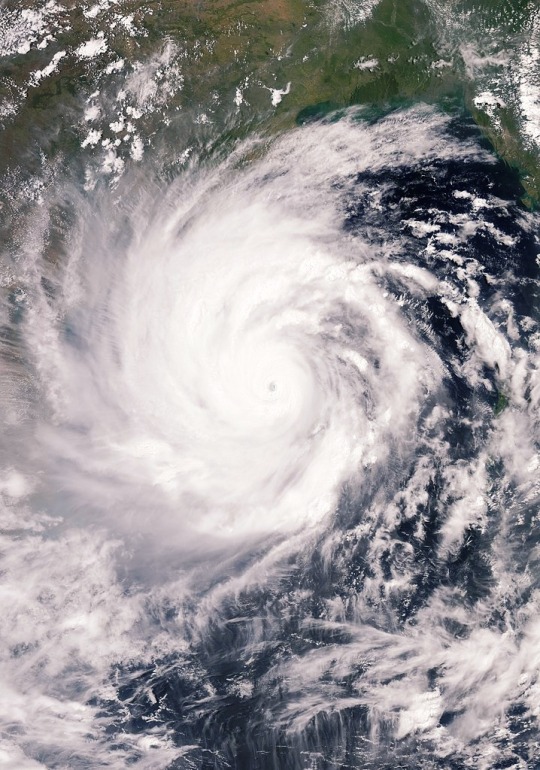
My city, Kolkata (in WB), was ravaged, with thousands of trees uprooted, electricity poles torn down, buildings and temporary shelters shattered to the ground. The most devastating losses however, were faced by the poorest people in my state, those living in and around the Sunderbans Belt of Bengal. District after district was flooded, people gathering in storm shelters after losing everything, their homes, livelihoods and properties. Everything was swept away by the cyclone, swallowed and spat out, unrecognizable, in shreds. Our state, being a riverine terrain, housing the largest delta in the world, was already a precarious zone due to being hit by massive floods every monsoon, and this cyclone was the by far the deadliest blow to the already fragile ecosystem.



The loss estimated by govt and other authorities is worth somewere around INR 1 lakh Crore (USD 1,321,658,000).
Still now after 6 days since the cyclone hit, massive parts of Bengal are plunged in darkness, people stranded in temporary shelters, with no drinking water or food. Covid-19 seems a lesser threat now as compared to what we have faced.
Both national and international media are practically silent about it, with the result that the relief operations and funding are nowhere near the amount or efforts required. Even as I write this, millions of people are stranded at remote locations without communication, housing or basic food and water supplies.
I urge you, wherever in the world you are, please please come forward and help us out 🙏 even a single dollar, however much you are able to spare, will help. Every single contribution is going to help towards rebuilding the lives of millions.
👇👇👇Below are the details to some of the ground level NGOs working to provide relief, their details and authenticity have been verified by me, and wherever possible, I've provided links to their official websites. For any queries or details, feel free to contact me, reply in the comments or send asks.
👉A full list of all major NGOs working for relief and their contact / donation details can be found here. 👈
Please help to save the Cyclone Amphan Victims 🙏
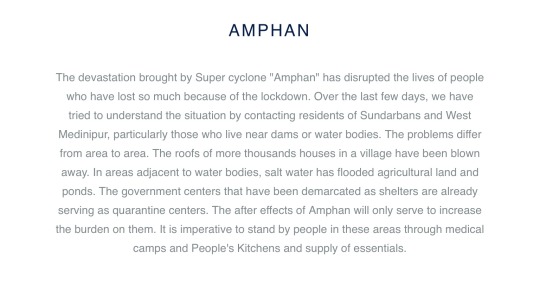
1. Quarantined Students Youth Network (volunteer students network who are doing relief work in major areas)
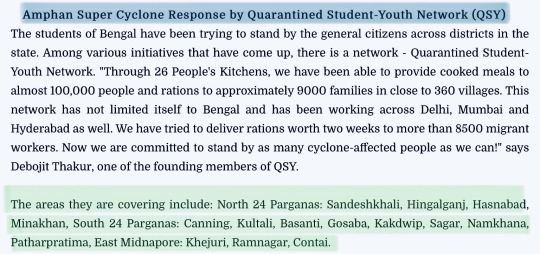
PAYPAL link 👇

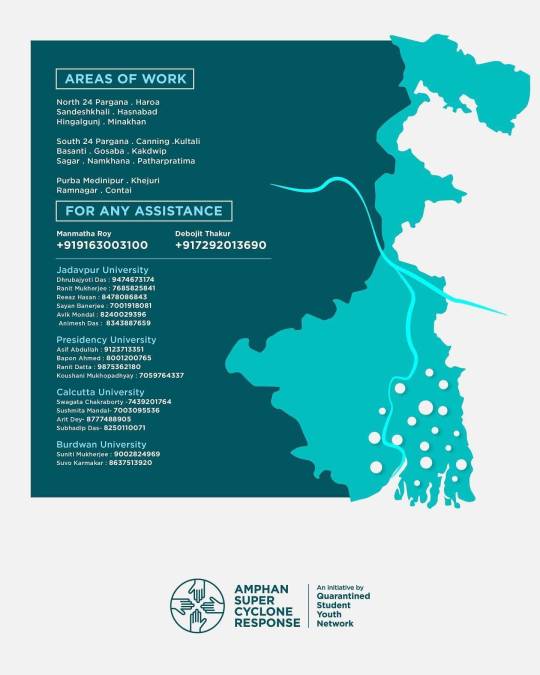
2. West Bengal State Emergency Relief Fund (govt treasury) :


I will be updating the list as and when further names come up.
Links to news articles regarding the Cyclone :
The Print | Scroll | TOI | NDTV | CNN | EdexLive | BBC | NY TIMES
PLEASE REBLOG AND SPREAD THE WORD. EVERY CONTRIBUTION WILL HELP. 🙏
#Cyclone Amphan#Cyclone Amphan help#Amphan West Bengal#India#West Bengal#natural disasters#Cyclone Amphan Donations#amphan news#amphan update#PLEASE REBLOG#DO NOT IGNORE#THIS IS AN EMERGENCY#@all my mutuals please help me out by reblogging this 🙏
683 notes
·
View notes
Photo
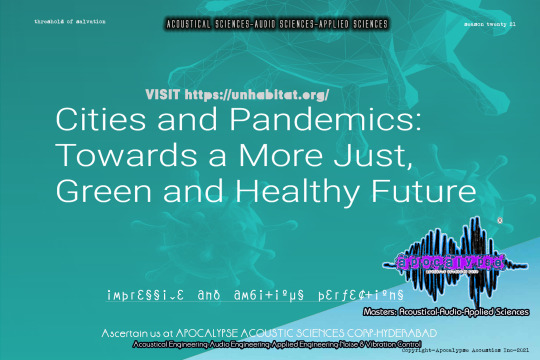
#impacting #people’s #quality of #life, Covid-19, Twenty and Twenty One.
#Wakeup #India
Impacting people’s quality of life, #Covid-19-21 #restrictions #are more #disproportionately #hurting the #urban #poor, #many of #whom have #lost their #livelihoods, #pushing them to the #edge and #threatening the #economy, #safety, and #security, #peace and #stability”, according to UN-Habitat’s annual report.
#Demonstrating how #uneven #public #space is #distributed, the #pandemic has #underlined the need to #create more #shared #spaces in #underprivileged #neighborhoods, as a #first #priority. To #rebuild #trust with #citizens, both #during and #after the #pandemic, UN-Habitat has #drafted key #messages on COVID-19 and #public space for #local #governments, #focusing on #accessibility, #flexibility, #design, #management and #maintenance, #connectivity, and #equitable #distribution of #public space for better #Healthcare.
As an #esteemed #acoustic #audio and #noise #abatement #community, we need to #ensure all #advice and #guidance from the #Governments is being #followed for the #health and #safety of #ourselves and #others.
If you wish to report a #breach of the #Covid-19 #rules at Apocalypse Acoustic Sciences Corp in India or its International presence, anonymously or with contact details, please use our #Report + #Support #service at [email protected]. For urgent assistance, call Security on +91 (0)9848 083140.
Visit https://unhabitat.org/
#Qualityoflife#Covid#Pandemic#isolationbooths#quarentinebooths#publicspaces#design#noise#healthcare#acoustics#acousticalconsultant#noiseconsultant
1 note
·
View note
Text
What will the world be like after coronavirus? Four possible futures
by Simon Mair

Where will we be in six months, a year, ten years from now? I lie awake at night wondering what the future holds for my loved ones. My vulnerable friends and relatives. I wonder what will happen to my job, even though I’m luckier than many: I get good sick pay and can work remotely. I am writing this from the UK, where I still have self-employed friends who are staring down the barrel of months without pay, friends who have already lost jobs. The contract that pays 80% of my salary runs out in December. Coronavirus is hitting the economy badly. Will anyone be hiring when I need work?
There are a number of possible futures, all dependent on how governments and society respond to coronavirus and its economic aftermath. Hopefully we will use this crisis to rebuild, produce something better and more humane. But we may slide into something worse.
I think we can understand our situation – and what might lie in our future – by looking at the political economy of other crises. My research focuses on the fundamentals of the modern economy: global supply chains, wages, and productivity. I look at the way that economic dynamics contribute to challenges like climate change and low levels of mental and physical health among workers. I have argued that we need a very different kind of economics if we are to build socially just and ecologically sound futures. In the face of COVID-19, this has never been more obvious.
The responses to the COVID-19 pandemic are simply the amplification of the dynamic that drives other social and ecological crises: the prioritisation of one type of value over others. This dynamic has played a large part in driving global responses to COVID-19. So as responses to the virus evolve, how might our economic futures develop?
From an economic perspective, there are four possible futures: a descent into barbarism, a robust state capitalism, a radical state socialism, and a transformation into a big society built on mutual aid. Versions of all of these futures are perfectly possible, if not equally desirable.

What might our future hold? Jose Antonio Gallego Vázquez/Unsplash, FAL
Small changes don’t cut it
Coronavirus, like climate change, is partly a problem of our economic structure. Although both appear to be “environmental” or “natural” problems, they are socially driven.
Yes, climate change is caused by certain gases absorbing heat. But that’s a very shallow explanation. To really understand climate change, we need to understand the social reasons that keep us emitting greenhouse gases. Likewise with COVID-19. Yes, the direct cause is the virus. But managing its effects requires us to understand human behaviour and its wider economic context.
Tackling both COVID-19 and climate change is much easier if you reduce nonessential economic activity. For climate change this is because if you produce less stuff, you use less energy, and emit fewer greenhouse gases. The epidemiology of COVID-19 is rapidly evolving. But the core logic is similarly simple. People mix together and spread infections. This happens in households, and in workplaces, and on the journeys people make. Reducing this mixing is likely to reduce person-to-person transmission and lead to fewer cases overall.

This article is part of Conversation Insights
The Insights team generates long-form journalism derived from interdisciplinary research. The team is working with academics from different backgrounds who have been engaged in projects aimed at tackling societal and scientific challenges.
Reducing contact between people probably also helps with other control strategies. One common control strategy for infectious disease outbreaks is contact tracing and isolation, where an infected person’s contacts are identified, then isolated to prevent further disease spread. This is most effective when you trace a high percentage of contacts. The fewer contacts a person has, the fewer you have to trace to get to that higher percentage.
We can see from Wuhan that social distancing and lockdown measures like this are effective. Political economy is useful in helping us understand why they weren’t introduced earlier in European countries and the US.
A fragile economy
Lockdown is placing pressure on the global economy. We face a serious recession. This pressure has led some world leaders to call for an easing of lockdown measures.
Even as 19 countries sat in a state of lockdown, the US president, Donald Trump, and Brazilian President Jair Bolsonaro called for roll backs in mitigation measures. Trump called for the American economy to get back to normal in three weeks (he has now accepted that social distancing will need to be maintained for much longer). Bolsonaro said: “Our lives have to go on. Jobs must be kept … We must, yes, get back to normal.”
In the UK meanwhile, four days before calling for a three-week lockdown, Prime Minister Boris Johnson was only marginally less optimistic, saying that the UK could turn the tide within 12 weeks. Yet even if Johnson is correct, it remains the case that we are living with an economic system that will threaten collapse at the next sign of pandemic.
The economics of collapse are fairly straightforward. Businesses exist to make a profit. If they can’t produce, they can’t sell things. This means they won’t make profits, which means they are less able to employ you. Businesses can and do (over short time periods) hold on to workers that they don’t need immediately: they want to be able to meet demand when the economy picks back up again. But, if things start to look really bad, then they won’t. So, more people lose their jobs or fear losing their jobs. So they buy less. And the whole cycle starts again, and we spiral into an economic depression.
In a normal crisis the prescription for solving this is simple. The government spends, and it spends until people start consuming and working again. (This prescription is what the economist John Maynard Keynes is famous for).
But normal interventions won’t work here because we don’t want the economy to recover (at least, not immediately). The whole point of the lockdown is to stop people going to work, where they spread the disease. One recent study suggested that lifting lockdown measures in Wuhan (including workplace closures) too soon could see China experience a second peak of cases later in 2020.
As the economist James Meadway wrote, the correct COVID-19 response isn’t a wartime economy – with massive upscaling of production. Rather, we need an “anti-wartime” economy and a massive scaling back of production. And if we want to be more resilient to pandemics in the future (and to avoid the worst of climate change) we need a system capable of scaling back production in a way that doesn’t mean loss of livelihood.
So what we need is a different economic mindset. We tend to think of the economy as the way we buy and sell things, mainly consumer goods. But this is not what an economy is or needs to be. At its core, the economy is the way we take our resources and turn them into the things we need to live. Looked at this way, we can start to see more opportunities for living differently that allow us to produce less stuff without increasing misery.
I and other ecological economists have long been concerned with the question of how you produce less in a socially just way, because the challenge of producing less is also central to tackling climate change. All else equal, the more we produce the more greenhouse gases we emit. So how do you reduce the amount of stuff you make while keeping people in work?
Proposals include reducing the length of the working week, or, as some of my recent work has looked at, you could allow people to work more slowly and with less pressure. Neither of these is directly applicable to COVID-19, where the aim is reducing contact rather than output, but the core of the proposals is the same. You have to reduce people’s dependence on a wage to be able to live.
What is the economy for?
The key to understanding responses to COVID-19 is the question of what the economy is for. Currently, the primary aim of the global economy is to facilitate exchanges of money. This is what economists call “exchange value”.
The dominant idea of the current system we live in is that exchange value is the same thing as use value. Basically, people will spend money on the things that they want or need, and this act of spending money tells us something about how much they value its “use”. This is why markets are seen as the best way to run society. They allow you to adapt, and are flexible enough to match up productive capacity with use value.
What COVID-19 is throwing into sharp relief is just how false our beliefs about markets are. Around the world, governments fear that critical systems will be disrupted or overloaded: supply chains, social care, but principally healthcare. There are lots of contributing factors to this. But let’s take two.
First, it is quite hard to make money from many of the most essential societal services. This is in part because a major driver of profits is labour productivity growth: doing more with fewer people. People are a big cost factor in many businesses, especially those that rely on personal interactions, like healthcare. Consequently, productivity growth in the healthcare sector tends to be lower than the rest of the economy, so its costs go up faster than average.
Second, jobs in many critical services aren’t those that tend to be highest valued in society. Many of the best paid jobs only exist to facilitate exchanges; to make money. They serve no wider purpose to society: they are what the anthropologist David Graeber calls “bullshit jobs”. Yet because they make lots of money we have lots of consultants, a huge advertising industry and a massive financial sector. Meanwhile, we have a crisis in health and social care, where people are often forced out of useful jobs they enjoy, because these jobs don’t pay them enough to live.

Bullshit jobs are innumerable. Jesus Sanz/Shutterstock.com
Pointless jobs
The fact that so many people work pointless jobs is partly why we are so ill prepared to respond to COVID-19. The pandemic is highlighting that many jobs are not essential, yet we lack sufficient key workers to respond when things go bad.
People are compelled to work pointless jobs because in a society where exchange value is the guiding principle of the economy, the basic goods of life are mainly available through markets. This means you have to buy them, and to buy them you need an income, which comes from a job.
The other side of this coin is that the most radical (and effective) responses that we are seeing to the COVID-19 outbreak challenge the dominance of markets and exchange value. Around the world governments are taking actions that three months ago looked impossible. In Spain, private hospitals have been nationalised. In the UK, the prospect of nationalising various modes of transport has become very real. And France has stated its readiness to nationalise large businesses.
Likewise, we are seeing the breakdown of labour markets. Countries like Denmark and the UK are providing people with an income in order to stop them from going to work. This is an essential part of a successful lockdown. These measures are far from perfect. Nonetheless, it is a shift from the principle that people have to work in order to earn their income, and a move towards the idea that people deserve to be able to live even if they cannot work.
This reverses the dominant trends of the last 40 years. Over this time, markets and exchange values have been seen as the best way of running an economy. Consequently, public systems have come under increasing pressures to marketise, to be run as though they were businesses who have to make money. Likewise, workers have become more and more exposed to the market – zero-hours contracts and the gig economy have removed the layer of protection from market fluctuations that long term, stable, employment used to offer.
COVID-19 appears to be reversing this trend, taking healthcare and labour goods out of the market and putting it into the hands of the state. States produce for many reasons. Some good and some bad. But unlike markets, they do not have to produce for exchange value alone.
These changes give me hope. They give us the chance to save many lives. They even hint at the possibility of longer term change that makes us happier and helps us tackle climate change. But why did it take us so long to get here? Why were many countries so ill-prepared to slowdown production? The answer lies in a recent World Health Organisation report: they did not have the right “mindset”.
Our economic imaginations
There has been a broad economic consensus for 40 years. This has limited the ability of politicians and their advisers to see cracks in the system, or imagine alternatives. This mindset is driven by two linked beliefs:
The market is what delivers a good quality of life, so it must be protected
The market will always return to normal after short periods of crisis
These views are common to many Western countries. But they are strongest in the UK and the US, both of which have appeared to be badly prepared to respond to COVID-19.
In the UK, attendees at a private engagement reportedly summarised the Prime Minister’s most senior aide’s approach to COVID-19 as “herd immunity, protect the economy, and if that means some pensioners die, too bad”. The government has denied this, but if real, it’s not surprising. At a government event early in the pandemic, a senior civil servant said to me: “Is it worth the economic disruption? If you look at the treasury valuation of a life, probably not.”
This kind of view is endemic in a particular elite class. It is well represented by a Texas official who argued that many elderly people would gladly die rather than see the US sink into economic depression. This view endangers many vulnerable people (and not all vulnerable people are elderly), and, as I have tried to lay out here, it is a false choice.
One of the things the COVID-19 crisis could be doing, is expanding that economic imagination. As governments and citizens take steps that three months ago seemed impossible, our ideas about how the world works could change rapidly. Let us look at where this re-imagining could take us.
Four futures
To help us visit the future, I’m going to use a technique from the field of futures studies. You take two factors you think will be important in driving the future, and you imagine what will happen under different combinations of those factors.
The factors I want to take are value and centralisation. Value refers to whatever is the guiding principle of our economy. Do we use our resources to maximise exchanges and money, or do we use them to maximise life? Centralisation refers to the ways that things are organised, either by of lots of small units or by one big commanding force. We can organise these factors into a grid, which can then be populated with scenarios. So we can think about what might happen if we try to respond to the coronavirus with the four extreme combinations:
1) State capitalism: centralised response, prioritising exchange value
2) Barbarism: decentralised response prioritising exchange value
3) State socialism: centralised response, prioritising the protection of life
4) Mutual aid: decentralised response prioritising the protection of life.
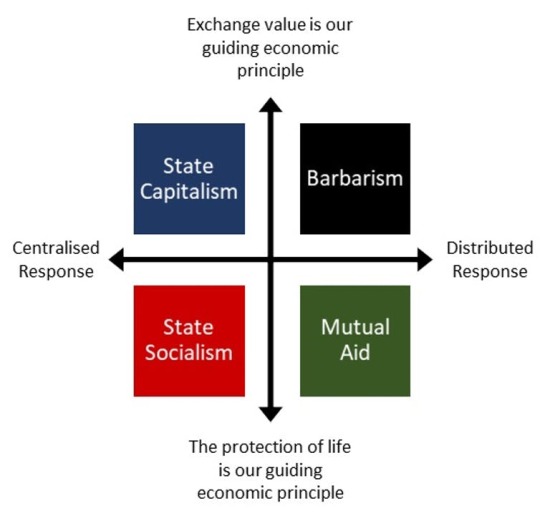
The four futures. © Simon Mair, Author provided
State capitalism
State capitalism is the dominant response we are seeing across the world right now. Typical examples are the UK, Spain and Denmark.
The state capitalist society continues to pursue exchange value as the guiding light of the economy. But it recognises that markets in crisis require support from the state. Given that many workers cannot work because they are ill, and fear for their lives, the state steps in with extended welfare. It also enacts massive Keynesian stimulus by extending credit and making direct payments to businesses.
The expectation here is that this will be for a short period. The primary function of the steps being taken is to allow as many businesses as possible to keep on trading. In the UK, for example, food is still distributed by markets (though the government has relaxed competition laws). Where workers are supported directly, this is done in ways that seek to minimise disruption of normal labour market functioning. So, for example, as in the UK, payments to workers have to be applied for and distributed by employers. And the size of payments is made on the basis of the exchange value a worker usually creates in the market, rather than the usefulness of their work.
Could this be a successful scenario? Possibly, but only if COVID-19 proves controllable over a short period. As full lockdown is avoided to maintain market functioning, transmission of infection is still likely to continue. In the UK, for instance, non-essential construction is still continuing, leaving workers mixing on building sites. But limited state intervention will become increasingly hard to maintain if death tolls rise. Increased illness and death will provoke unrest and deepen economic impacts, forcing the state to take more and more radical actions to try to maintain market functioning.
Barbarism
This is the bleakest scenario. Barbarism is the future if we continue to rely on exchange value as our guiding principle and yet refuse to extend support to those who get locked out of markets by illness or unemployment. It describes a situation that we have not yet seen.
Businesses fail and workers starve because there are no mechanisms in place to protect them from the harsh realities of the market. Hospitals are not supported by extraordinary measures, and so become overwhelmed. People die. Barbarism is ultimately an unstable state that ends in ruin or a transition to one of the other grid sections after a period of political and social devastation.
Could this happen? The concern is that either it could happen by mistake during the pandemic, or by intention after the pandemic peaks. The mistake is if a government fails to step in in a big enough way during the worst of the pandemic. Support might be offered to businesses and households, but if this isn’t enough to prevent market collapse in the face of widespread illness, chaos would ensue. Hospitals might be sent extra funds and people, but if it’s not enough, ill people will be turned away in large numbers.
Potentially just as consequential is the possibility of massive austerity after the pandemic has peaked and governments seek to return to “normal”. This has been threatened in Germany. This would be disastrous. Not least because defunding of critical services during austerity has impacted the ability of countries to respond to this pandemic.
The subsequent failure of the economy and society would trigger political and social unrest, leading to a failed state and the collapse of both state and community welfare systems.
youtube
State socialism
State socialism describes the first of the futures we could see with a cultural shift that places a different kind of value at the heart of the economy. This is the future we arrive at with an extension of the measures we are currently seeing in the UK, Spain and Denmark.
The key here is that measures like nationalisation of hospitals and payments to workers are seen not as tools to protect markets, but a way to protect life itself. In such a scenario, the state steps in to protect the parts of the economy that are essential to life: the production of food, energy and shelter for instance, so that the basic provisions of life are no longer at the whim of the market. The state nationalises hospitals, and makes housing freely available. Finally, it provides all citizens with a means of accessing various goods – both basics and any consumer goods we are able to produce with a reduced workforce.
Citizens no longer rely on employers as intermediaries between them and the basic materials of life. Payments are made to everyone directly and are not related to the exchange value they create. Instead, payments are the same to all (on the basis that we deserve to be able to live, simply because we are alive), or they are based on the usefulness of the work. Supermarket workers, delivery drivers, warehouse stackers, nurses, teachers, and doctors are the new CEOs.
It’s possible that state socialism emerges as a consequence of attempts at state capitalism and the effects of a prolonged pandemic. If deep recessions happen and there is disruption in supply chains such that demand cannot be rescued by the kind of standard Keynesian policies we are seeing now (printing money, making loans easier to get and so on), the state may take over production.
There are risks to this approach – we must be careful to avoid authoritarianism. But done well, this may be our best hope against an extreme COVID-19 outbreak. A strong state able to marshal the resources to protect the core functions of economy and society.
Mutual aid
Mutual aid is the second future in which we adopt the protection of life as the guiding principle of our economy. But, in this scenario, the state does not take a defining role. Rather, individuals and small groups begin to organise support and care within their communities.
The risks with this future is that small groups are unable to rapidly mobilise the kind of resources needed to effectively increase healthcare capacity, for instance. But mutual aid could enable more effective transmission prevention, by building community support networks that protect the vulnerable and police isolation rules. The most ambitious form of this future sees new democratic structures arise. Groupings of communities that are able to mobilise substantial resources with relative speed. People coming together to plan regional responses to stop disease spread and (if they have the skills) to treat patients.
This kind of scenario could emerge from any of the others. It is a possible way out of barbarism, or state capitalism, and could support state socialism. We know that community responses were central to tackling the West African Ebola outbreak. And we already see the roots of this future today in the groups organising care packages and community support. We can see this as a failure of state responses. Or we can see it as a pragmatic, compassionate societal response to an unfolding crisis.
Hope and fear
These visions are extreme scenarios, caricatures, and likely to bleed into one another. My fear is the descent from state capitalism into barbarism. My hope is a blend of state socialism and mutual aid: a strong, democratic state that mobilises resources to build a stronger health system, prioritises protecting the vulnerable from the whims of the market and responds to and enables citizens to form mutual aid groups rather than working meaningless jobs.
What hopefully is clear is that all these scenarios leave some grounds for fear, but also some for hope. COVID-19 is highlighting serious deficiencies in our existing system. An effective response to this is likely to require radical social change. I have argued it requires a drastic move away from markets and the use of profits as the primary way of organising an economy. The upside of this is the possibility that we build a more humane system that leaves us more resilient in the face of future pandemics and other impending crises like climate change.
Social change can come from many places and with many influences. A key task for us all is demanding that emerging social forms come from an ethic that values care, life, and democracy. The central political task in this time of crisis is living and (virtually) organising around those values.
About The Author:
Simon Mair is a Research Fellow in Ecological Economics at the Centre for the Understanding of Sustainable Prosperity, University of Surrey
This article is republished from The Conversation under a Creative Commons license.
21 notes
·
View notes
Photo
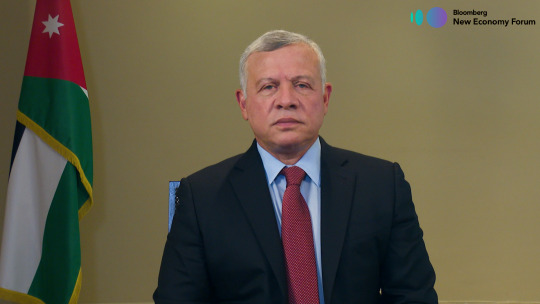
16 November 2020: King Abdullah II participated in the Bloomberg New Economy Forum, which focused this year on bolstering international cooperation and fortifying various economic sectors, especially in light of the repercussions of the COVID-19 pandemic.
The Forum, held virtually over four days, features the participation of several current and former heads of state, influential business executives, government officials, and academic and economic experts from around the world, to exchange ideas and discuss means of promoting global action towards sustainability and inclusive growth. (Source: Petra)
Following is the full text of King Abdullah’s remarks at the Forum:
“In the name of God, the Compassionate, the Merciful,
Dear friends,
It is my pleasure to join you at this global forum, and to be part of your insightful discussions during such a monumental period in our modern history.
As you have been discussing in today’s sessions, the COVID-19 pandemic and its repercussions have brought about transformations to our world that come but once every few generations.
This is indeed a wake-up call. It shows us that we need each other. It shows us that all life is precious. It shows us that one country’s problem is every country’s problem. We cannot simply choose to close our eyes and ears to the world, and expect to survive this unharmed.
Instead of turning our backs on years of international connectivity, imperfect though it may be, we are better served fortifying the foundations of our global system, and looking at ways to improve, and re-globalise our world.
COVID has given us the rare opportunity to do that—to look at how we can make our world better and more resilient against current and future crises, including the ever-present impact of climate change.
Three immediate areas of concern demand our attention—improving access to healthcare, enhancing food security, and nurturing innovation to catalyse recovery.
My friends,
The pandemic has shown us how connected we truly are. Before it, we are all equal. No one is immune. So let’s use our connectivity to fight back, by ensuring the efficient distribution of vaccines and treatments. The vaccine, after all, must be treated as a global public good.
For our part, we are ready to deploy Jordan’s pharmaceutical industry, in service of this mission, to guarantee that the vaccine is produced and distributed sufficiently, especially to the most vulnerable communities, such as refugees and families living in poverty.
Another issue that we must address is food security. The number of people at risk of hunger is expected to rise to 265 million this year, due to the economic impact of the pandemic, an increase of 130 million.
Easing access to modern agricultural technology, especially for farmers in developing countries, is key to improving the quality and availability of food.
The agri-food sector in Jordan, for example, supports the livelihoods of about a quarter of the population. It is one of the largest sources of employment for working-age refugees and women in rural communities. And since the onset of the pandemic, it has proven its strong position on the global supply chain. With additional investment and increased reliance on technology, there is room for substantial growth.
Indeed, technology has the potential to boost our global path to recovery post-COVID.
One of the bright spots of our pandemic response has been seeing young Jordanians rise to the occasion, and come up with innovative digital solutions, in record time, to bolster our resilience, in healthcare, education, and e-commerce, while also offering services to others in the region.
This is why empowering and investing in SMEs, by facilitating their access to finance, technology, and markets, is a must, as we work towards inclusive growth and recovery.
My friends,
COVID-19 has upended our world. Over 1 million precious lives have been lost. Families in every country have lost loved ones to this pandemic. Millions have lost their sources of livelihood.
At this forum, I urge you to think of them. Too often, we lose ourselves in the technicalities, the policies, the numbers. As you look at ways to rebuild a more resilient, inclusive world, remember to put people at the heart of your discussions.
I wish you every success.”
The Bloomberg New Economy Forum, now in its third year, is a platform for collaboration, identifying economic opportunities, and devising mechanisms to overcome global economic challenges.
2 notes
·
View notes
Text
How to make your fleet management business COVID proof business
Earlier this year, COVID19 broke into our lives and left a trail of disasters. Businesses came to a halt, especially those involving people walking out of their homes. Rental taxi services, which were buzzing states with the excitement of the IoT led to it have been among those heavily affected.
For those unfamiliar with the term, IoT stands for Internet of Things. The term was coined to refer to the practice of equipping ordinary devices with an Internet connection and making it part of a network of devices capable of exchanging information in real time. The technology itself is nothing new, it is the possibilities that have arisen. open thanks to this powerful coupling between the internet and everyday devices that made it so exciting.

Today, it's a lifesaver, both for people and for businesses helping people earn a living. of the pandemic, fleet management had begun to be revolutionized using the principles of IoT, cloud computing and GPS. It's a much-needed respite for fleet managers who struggle hard to plan and choose an optimal route.
Now, it's helping us get back on our wheels towards COVID-proof fleet management services so that fleet operators, businesses, employees and drivers can rebuild.
So how exactly does it do this?
It does this by automatic route optimization Optimized routes involve the inclusion of as many scheduled stops in the minimum number of vehicles as possible while respecting the COVID protection rules Lives and livelihoods are saved in this way
Let's give a look at some of the most important challenges facing the fleet after covid19 and how we can overcome them
Budget control
Financial setbacks resulting from the pandemic have tightened budgets everywhere. Fortunately, we have the technology to use resources at an optimal level. Cloud-based apps such as SafeBus and Safetrax hosted by Autologix has a feature called auto-routing which automatically generates the fastest and safest route which efficiently covers all programmed locations using the minimum numb Auto-routing filters are flexible and therefore customizable. You can easily control your budget while still providing excellent services to all your clients.
Engine checks
Whenever a car on a ship has a problem, they are forced to stay on the road and reduce maintenance until it is repaired This is called ship repair on time. it is so expensive that it needs to be handled with care. Inspecting the vehicle, checking it all the time, and working can go a long way to prevent time lapse. Time ahead means more value than we are working to improve vessel control over time. if you detect anything running or turning suddenly, it may detect an intoxicating driver who has a fingerprint scanner for privacy oil. you can steer the drivers or take the right thing without question insurance Se telematics technology to manage your boat. For COVID19, you have the benefit of hindsight of making sure that regular financial audits and social interactions are conducted seamlessly. it almost blocked some places.
Monitoring
Your mechanized armada the executives programming tracks each vehicle progressively as well as intently screens driver conduct to take note of any cases of speeding, unexpected turns, or abrupt use of brakes. It can distinguish an alcoholic driver with sensors that investigate fingertips for oil emissions. With a particularly postgraduate education of detail in checking, you can mentor drivers or make a suitable move with an undeniable confirmation. Insurance agencies by and large offer limits on expenses on the off chance that you use telematics innovation to deal with your armada. For COVID19, you have the additional advantage of guaranteeing that customary temperature checks and social separating are in effect regularly rehearsed as a matter of course.
Coronavirus Hotspots
Dodge Coronavirus hotspots adequately by utilizing the geofencing highlight. Geofencing includes basically bolting endlessly a specific area. With constant updates about Coronavirus improvements in specific zones, geo-fencing can be actuated so that if a driver attempts to enter a confined way, an alarm is sent promptly to move administrators.
Presently, like never before is an ideal opportunity to make the move from manual armada the executives to computerized advanced ones. It will set aside time and cash effectively, while leaving Covid-19 speechless, and bring your business back in transit to benefit and achievement.
Source: https://www.autologix.io/blogs/how-to-make-your-fleet-management-business-covid-proof-business/
1 note
·
View note
Photo
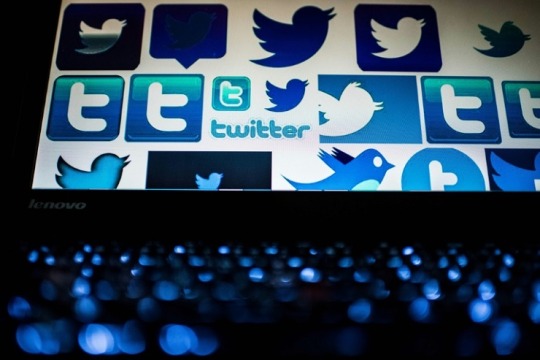
Battlefield Social Media: The West’s Growing Censorship
Censorship in the West flourishes as tech giants turn social media back into traditional programmed media.
The United States, United Kingdom and the European Union are fond of passing judgement on nations around the globe regarding “free speech.”
While it is increasingly clear to a growing number of people that this “concern” is disingenuous and aimed at merely defending agitators funded and directed by Western special interests in these targeted nations, the West still likes to fashion itself as a sort of champion of free speech.
Yet back home the Internet has been taken over by social media and tech giants like Google, Facebook and Twitter.
Their platforms clearly serve as online public squares where everything is discussed and even election campaigns play out. Yet these companies have, over the years, begun to eliminate voices of dissent against a notion known as “consensus.”
If you are speaking out against “consensus” you are in real danger of disappearing from these platforms. Some of these platforms, like Google-owned YouTube, serve as the livelihood to people who have for years built up their audiences, produced hundreds of videos and when their accounts are deleted for speaking out against the “consensus,” they have their livelihoods destroyed.
In the wake of these incremental “purges” is a chilling effect with content creators self-censoring or even withdrawing entirely from Western social media.
It is the sort of very real censorship the West has crusaded against in fiction around the globe for decades.
Concensus or Else
A more recent example is Google’s decision to ban ad revenue for those going against the Coronavirus Disease 2019 (COVID-19) “consensus.”
CNBC in their story “Google will ban ads from running on stories spreading debunked coronavirus conspiracy theories,” would claim:
Google next month will ban publishers from using its ad platform to show advertisements next to content that promotes conspiracy theories about COVID-19. It will also ban ads that promote those theories. In cases where a particular site publishes a certain threshold of material that violates these policies, it will ban the entire site from using its ad platforms.
Those “conspiracy theories” might include questioning the official death rates of COVID-19. Yet even the British government itself has been recently forced to investigate its statistics regarding death rates, vindicating the very sort of people who would have been either forced into silence or forced to give up ad revenue.
The London Guardian in its article, “Matt Hancock orders urgent review of PHE Covid-19 death figures,” would admit:
The UK health secretary, Matt Hancock, is ordering an urgent review of the daily COVID-19 death statistics produced by Public Health England, after it emerged that they may include recovered former sufferers who could have died of other causes.
False reporting over deaths to hype COVID-19, induce greater public panic and pave the way for billions in government handouts to pharmaceutical giants is at the very core of many of these so-called “conspiracy theories” Google seeks to silence through its campaign of financial coercion.
Imagine if this chilling effect was achieved sooner. Would the British government have even bothered investigating its faulty statistics if there weren’t people suspicious of them?
The chilling effect this has over openly discussing something as serious as COVID-19 considering its socioeconomic impact is truly alarming and much more so because it is happening in the so-called “free world” overseen by its self-appointed arbitrators in the US, UK and EU.
A similar campaign was carried out to purge Google, Twitter and Facebook of anyone allegedly connected with “Russia” who also so happened to be anti-war and anti-NATO for waging those wars.
Entire lists are compiled by Western government-funded organizations which are then submitted to these tech giants for purging. The Western media writes accompanying articles announcing, justifying and spinning the purges… but also sending a warning to those left about what is and isn’t going to be tolerated on these platforms.
Social Media Transforming Back into Programmed Media
Content creators are faced with two decisions; to either self-censor themselves to protect their work, their audiences and their livelihood, or to accept the possibility they will eventually be “purged” (censored) and need to rebuild their audiences from scratch on platforms with far fewer potential readers, viewers and patrons.
Social media, of course, is no longer social media in this sort of environment, but more akin to the sort of programmed media giant Western special interests built their power on over the course of the 20th and early 21st century.
Private Public Squares?
Of course the defense is that Google, Facebook and Twitter are “private companies”and can do as they please with their platforms. In reality, these companies work in tandem with Western governments whether it is fomenting political destabilization abroad or creating “concensus” at home.
The notion that censorship is “ok” because the US, UK and EU governments launder it through private companies ignores the close relationship these companies have with the government and how their platforms have been transformed into defacto public squares and critical channels of public communication and participation.
The West’s growing overt censorship leaves it with a choice; to either accept that it is in reality as guilty of censorship and manipulating the public as it has claimed its opponents are, or continue pretending it isn’t but at the continued cost of its legitimacy upon the global stage.
There is a very good reason the West is in decline around the globe and why its attempts to leverage notions like “human rights” and “free speech” against nations like China or Russia are increasingly impotent. That reason can be found, at least in part, among the growing number of purge lists, censorship campaigns and calls for “consensus” across Western social media.
Finally, the increasingly overt nature of censorship and controlled narratives promoted by tech giants like Google, Facebook and Twitter should have them facing restrictions and bans around the globe. Why should any nation host a “public square” where discourse is entirely controlled by interests oceans away? Why shouldn’t a local alternative be created instead where the revenue is kept locally and if narratives are to be controlled, controlled in a way that best suits people locally?
It is ironic that, China for example, is condemned for not allowing Google, Facebook and Twitter to operate freely within their information space because it is a violation of “free speech,” even as Google, Facebook and Twitter cudgel free speech on their own respective platforms.
How much longer will the world tolerate these double standards? How long until individuals, organizations and even entire nations begin creating alternatives to Google, Facebook and Twitter to at the very least balance out the lopsided power and influence they have collectively accrued and abused?
1 note
·
View note
Photo

Digital Financial Inclusion among Tribes A Post Covid Pandemic Scenario
BY Nisha K | Dr. Jayarajan T K "Digital Financial Inclusion among Tribes: A Post Covid Pandemic Scenario"
Published in International Journal of Trend in Scientific Research and Development (ijtsrd), ISSN: 2456-6470, Volume-5 | Issue-5 , August 2021,
URL: https://www.ijtsrd.com/papers/ijtsrd43815.pdf
Paper URL: https://www.ijtsrd.com/humanities-and-the-arts/social-science/43815/digital-financial-inclusion-among-tribes-a-post-covid-pandemic-scenario/nisha-k
internationaljournalsinengineering, callforpaperengineering, ugcapprovedengineeringjournal
Digital financial inclusion ensures that the marginalized and underserved population has digital access to and use of formal financial services. Such services should be personalized to the needs of consumers and delivered responsibly, at a cost that is both affordable consumers and fair for suppliers. For both individuals and companies, the digitalization of finance can reduce costs and open up new market and livelihood opportunities to help nations rebuild better after Covid 19. This study assesses the extent of digital financial inclusion and measures the awareness and usage level of digital financial services among tribal people in Kasaragod district, Kerala. The results showed that there is association between age of the respondents and the period of using digital financial services and also there is no significant difference between males and females in usage of digital financial services. The study reveals that people having different educational group have different level of awareness about digital financial services.
0 notes
Text
Introduction to sustainable development goal 2030 climate action
The year 2019 was the second warmest year recorded, the decade 2010-2019 was one of the warmest decades recorded ever. The concentration of carbon dioxide and the GHGs have risen to new records during the year 2019. The effects of climate change and global warming is being seen all across the globe. It is now disrupting lives, economy and business etc.
As a carbon footprint consultant, we are helping companies set carbon strategies so that they can reduce their emissions and play their role in climate change mitigation. We saw a temporary drop within the emission during the year 2020 because economic activities slow down as a result of covid 19 pandemic. These effects were temporary and now the economies have started to recover. The emissions are now increasing and may hit a new higher level in the coming 2-3 years. By addressing the climate emergency thousands of lives and livelihood can be saved.

The Paris agreement, which was signed in the year 2015 aims to strengthen the response to climate change effects by keeping the global warming temperature rise under 2 degrees Celsius by 2050. Being Carbon footprint consultant, we are working with several organizations in reducing their emissions and also setting Science-Based Targets (SBTi) in order to support the Paris agreement and the reduction of emissions.
Globally as the governments now restart rebuilding their economy after one year of covid 19 pandemics. This opportunity can be taken to shape an economy that supports clean and green energy that reduces emissions as well as provides a healthy and safe environment for people. The current pandemic crisis can also be seen as an opportunity for shifting towards a sustainable economy that is in balance with people as well as the environment.
The role of carbon footprint consultant has been more and more important in such times where emissions need to be estimated and managed in order to build a sustainable economy. The general secretary of the United Nations has proposed some of the steps that governments could take globally in order to balance growth as well as environmental issues:
Transitioning to the green economy where investment is directed to project reduce the carbon intensity.
Developing job opportunities for the green and clean sector.
Making our economy society, and people more resilient and equitable where no one is left behind.
Investment is directed towards sustainable solutions aimed at reducing the fossil fuel subsidy and embracing the principles of polluters must pay.
In the coming years global emissions are showing the sign of reaching new record levels, and the peak is not in sight any time soon. Leaders of all the countries need to come up with concrete and realistic plan on how to manage their GHG emissions through the nationally determined contributions as agreed under United Nations Framework Convention on Climate Change (UNFCCC).
Our team of carbon footprint consultant has also supported development of nationally determined contributions. We, Agile Advisors, are hopeful as carbon footprint consultant that globally the governments will provide the required attention to the issue of global warming and climate change and work towards the green economy that shall reduce the greenhouse gas emissions and limit global warming to under 2 degrees Celsius if not 1.5-degree Celsius.
0 notes
Photo

#impacting #people’s #quality of #life, Covid-19, Twenty and Twenty One.
#Wakeup #India
Impacting people’s quality of life, #Covid-19-21 #restrictions #are more #disproportionately #hurting the #urban #poor, #many of #whom have #lost their #livelihoods, #pushing them to the #edge and #threatening the #economy, #safety, and #security, #peace and #stability”, according to UN-Habitat’s annual report.
#Demonstrating how #uneven #public #space is #distributed, the #pandemic has #underlined the need to #create more #shared #spaces in #underprivileged #neighborhoods, as a #first #priority. To #rebuild #trust with #citizens, both #during and #after the #pandemic, UN-Habitat has #drafted key #messages on COVID-19 and #public space for #local #governments, #focusing on #accessibility, #flexibility, #design, #management and #maintenance, #connectivity, and #equitable #distribution of #public space for better #Healthcare.
As an #esteemed #acoustic #audio and #noise #abatement #community, we need to #ensure all #advice and #guidance from the #Governments is being #followed for the #health and #safety of #ourselves and #others.
If you wish to report a #breach of the #Covid-19 #rules at Apocalypse Acoustic Sciences Corp in India or its International presence, anonymously or with contact details, please use our #Report + #Support #service at [email protected]. For urgent assistance, call Security on +91 (0)9848 083140.
Visit https://unhabitat.org/
#qualityoflife#struggle#restrictions#badeconomy#publicspaces#healthcare#noiseconsultants#acousticconsultants
0 notes
Link
0 notes
Text
Can 2021 Rebuild Movie Theaters’ Theatrical Window?
https://ift.tt/eA8V8J
Last year the theatrical window was broken, thoroughly and repeatedly, as if a rock managed to shatter every big screen in America. In the aftermath, and as movie theater owners waded through the debris, numerous reports made the same gloomy prognosis: audiences’ relationship with movies had changed.
Perhaps. Yet it’s also fair to wonder if this change is temporary. We may now live in a world where superhero and Pixar movies can premiere on streaming, but the new year provides a new movie release calendar, and with it renewed commitments to bring audiences back to cinemas.
There are exceptions, of course. WarnerMedia made 17 of them when they announced that, like Wonder Woman 1984, Warner Brothers’ entire 2021 film slate would simultaneously premiere in theaters and on HBO Max in the U.S. The rollout of the decision was sloppy, however, with none of the filmmakers involved being warned, much less consulted. Similarly, there are concerns that profit participation and residuals, especially for below the line players, has been thrown to the wind. And to date, Warners’ fire sale approach remains isolated.
Other studios have reason to be cautious. At a glance, WB putting WW84 on HBO Max seems like a victory for WarnerMedia. While official new subscription numbers have not been released as of press time—as is typical with the Oz-like management of streaming data—we’ve nonetheless had several glimpses at the man behind the curtain. For starters, WarnerMedia announced this month that activated HBO Max subscriptions rose in the fourth quarter of the fiscal year to 17.2 million activations, doubling the reported 8.6 million activations back in October.
However, it is unclear how many of those new 17.2 million subscriptions came from new paying subscribers to the service, as opposed to customers with HBO cable subscriptions activating already existing accounts they previously had left dormant. Indeed, every one of HBO’s traditional 34+ million subscribers has an account to HBO Max.
For better clarity, Antenna, a streaming service measurement and analytics firm, reported that HBO Max gained more sign-ups in the first three days of Wonder Woman 1984’s release than any other three-day period for a streamer in 2020. And market research firm Apptopia claims an estimated 544,000 users signed up for HBO Max on mobile devices in that timeframe alone, which excludes Smart TVs, gaming consoles, and computers. When the end goal is to drive up subscriptions and market awareness for the new streaming service, WW84 appears to be a massive success through this limited information.
However, taking even that narrow 544,000 number into account, and assuming the number multiplied by 10 times over the next month with new subscribers and other devices (which would make up about a third of the new 17.2 million activations), this might still amount to just $82 million in new revenue from WW84‘s release alone. When coupled with WW84’s current $153.3 million worldwide gross (of which the studio will get about half), it still could have only earned a little over a quarter of the original Wonder Woman’s global run in 2017.
Without actual numbers this remains obviously (and frustratingly) speculative, but the exercise highlights how difficult it is for a major blockbuster to generate streaming viewership worthy of a $200 million budget (not to mention marketing and additional costs). WarnerMedia essentially sacrificed the film as a loss leader to buoy a service that, as of last October, less than a third of regular HBO subscribers had even bothered activating. Hence why the actual benefits are only seen if subscribers keep paying monthly subscriptions after the first month… and grow in number beyond the WW84 release when WB’s less high profile 2021 film slate unspools.
This is not to discredit HBO Max, which is a wonderful resource for cinephiles. Rather it’s to illustrate that the filmmaking industry, at least as we know it, has as vested an interest as exhibitors in seeing the theatrical window rebuilt in some fashion, even if it never quite looks the same.
Consider that while the Walt Disney Company, with its much healthier streaming service, has put movies like Soul and now Raya and the Last Dragon on Disney+ (with a luxurious surcharge in the latter’s case), Black Widow and the rest of their Marvel Studios slate is scheduled for three theatrical Disney releases in 2021. Meanwhile Universal Pictures, which broke the theatrical window first by putting Trolls World Tour on premium video on demand, is still committed to getting massive blockbusters like F9 and Jurassic World: Dominion in cinemas.
As 2021 brings new hope for mass COVID-19 vaccination, it also hints of a potential lifeline to cinemas. The blockbusters that underwrite the current studio system need them, and the filmmakers who dreamed of having their visions on the big screen will continue to demand them—as will those whose livelihoods depend on theatrical residuals. This holds as true for Steven Spielberg’s prestigious musical remake, West Side Story, as it does for David Lowry’s enigmatic retelling of Arthurian legend, The Green Knight.
And it holds true for Patty Jenkins too. In December, WB trumpeted on the heels of WW84’s debut that Wonder Woman 3 with Jenkins in the director’s chair was in the works. The studio also unsurprisingly confirmed the movie would have a theatrical release. This was a foregone conclusion though, especially given Jenkins’ past statements.
“I know that I’d love to do the third one if the circumstances were right and there was still a theatrical model possible,” Jenkins recently told The New York Times. “I don’t know that I would if there wasn’t.”
Comments—and commitments—like these ensure there will be some kind of a theatrical model. This year and beyond.
cnx.cmd.push(function() { cnx({ playerId: "106e33c0-3911-473c-b599-b1426db57530", }).render("0270c398a82f44f49c23c16122516796"); });
The post Can 2021 Rebuild Movie Theaters’ Theatrical Window? appeared first on Den of Geek.
from Den of Geek https://ift.tt/3tH8izT
0 notes
Text
Colonial Impacts On Maria
By Elena Vara, University of Illinois Urbana-Champaign Class of 2023
January 13, 2021
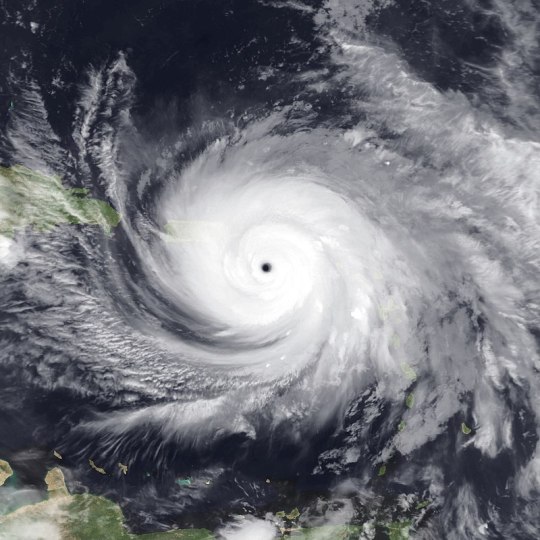
For years, the Caribbean has been suffering by the hands of colonial powers. There have been a number of occasions where the Caribbean has been left to fend for themselves in the wake of corruption and manipulation reinforced by colonial super powers. The Caribbean is left vulnerable to natural disasters ranging from hurricanes to earthquakes. The impact of these disasters is then magnified by poverty and inequality. Colonial countries then find ways to capitalize off of the Caribbean people’s suffering by taking advantage of the country while they are in the midst of recovering from disaster.
In the wake of Hurricane Maria, Puerto Rico was left with a completely destroyed country to rebuild. It killed thousands and left thousands more with their homes and livelihoods destroyed in its wake. For months after the hurricane, disaster teams were still handing out freshwater and food packs. Whereas in Texas or Florida after hurricane Irma and Harvey, they were handing out twice the number of supplies within the first few days of the disaster[1]. The excuse given for this lack of support was that the island was hard to get supplies from the mainland and the reason for the lack of supplies on the island was because they were sent to Florida to respond to Hurricane Irma, that happened earlier that season. These excuses can only go so far, it has been three years and improvements are still minimal due to the continued destruction from natural disasters that continue to cause setbacks in development.
The slow response has roots that run deeper than just not being able to reach the island. Colonialism in Puerto Rico has conditioned United States politics to see the Puerto Rican people as inferior. This fact is the reasoning for not giving the people of Puerto Rico a voice in politics, and treating them with mass amounts of racism. Under US control, the island was racialized and light skin was deemed superior compared to dark skin. This prioritization of the light skinned Puerto Rican was also clear in the response to Maria, “Assistance, however, has tended to come faster to less affected but more affluent and whiter cities like Guaynabo.”[2] This under funding of resources and suffering is not felt by all to the same degree, those who were most effected by the storm were largely left in the peripherals when it came to receiving aid that was more needed in their communities. In the light of COVID-19 these racialized and political views of Puerto Rico have become increasingly more dangerous for the citizens of Puerto Rico. After failing the country of Puerto Rico, by providing sufficient aid and personal protective equipment the country is left stranded, “…Puerto Rico is effectively embargoed – the islands are unable to trade with or receive aid from any country other than the USA.”[3] This is one example of many that show the long-lasting effects of keeping colonizers in Puerto Rico and the multitude of degrees that suffering takes place because Puerto Rico has not been given their right to share their political views and make change for the better if they have to stay under US rule.
Another reason given for why the response to restore water, power, and access to roads was so slow was because the infrastructure established was under maintained, outdated, and already weak before the storm hit. Puerto Rico’s infrastructure is largely to blame the economic crisis they find themselves in. It began in the 1970s when the US created a tax break incentive on the island, this allowed companies to avoid paying taxes on their earnings. This created a boom in the economy, but the incentive was cut in 1996 causing companies to leave. This led the country to barrow money to fill the deficits left in their economy. The fuel of this barrowing was through the selling of municipal bonds. Initially these investments were very stable and low risk, but that did not last long. Many investors were taken advantage of by their advisors. The advisor would give them a loan to take out of another bank, they would then use that loan to invest more into Puerto Rican bonds. By 2013, Puerto Rico had bitten off more than it could chew, they would not be able to pay back all the debt in bonds they now accumulated. This is all linked back to colonial capitalism and the exploitation of countries in order to make a profit.
The power dynamic and the economic control the United States has over Puerto Rico exploits the island’s resources in order for US corporations to benefit. In the wake of Maria, many rural communities were left without clean running water for weeks. With no infrastructure in place to monitor water contamination, the threat of contamination was a growing concern. This led to the government to recommend boiling the water before consumption, but without electricity there was no means to do so. There was a need for power across the entire country, “Maria knocked out 80% of these poorly maintained transmission lines—about 55,000 electric poles and 6500 lines of cable—leaving 100% of citizens without electricity.”[4] (García-López, 2018, p.104) Many poor industrial towns on the island suffered more than most due to the damages done to the factories and plants they cohabitate with. Many of these factories and plants were left unregulated and not inspected to assure no toxins were being released into the community. This continues to destroy the island’s environment.
With all this chaos throughout the nation, the opportunity for exploitation grows. The stories of billionaires taking the country in their stride and using their wealth to capitalize off of the weakness in the system were already occurring even before Maria. Their investments in the country tend to consume tons of resources and leave the island with the short end of the deal.
This exploitation is not felt by Puerto Rico alone, this is something that the entire Caribbean is facing. What made Puerto Rico different is that fact that they are still under control of a colonial power, but were ignored by those who claim to have their best interests in mind.
In Puerto Rico change needs to happen and has been trying to form for years now. The problems that face the country are not anything easy to tackle and fixing one thing will not fix the entire system and treatment of Puerto Rico. Reform needs to occur from the top down, change has been on the horizon for years. People are ready to fight to be taken seriously and be given the resources needed to rebuild their nation. One option that could be important and would provide a stepping stone to real change is by granting Puerto Rico full US citizenship. With the ability to share their voice and give their political opinions, politicians would be more inclined to hear what they have to say and actually create change. Another, more complex, reform would be to begin the transition to make Puerto Rico its own sovereign nation. This would have to be a slow ongoing process to ensure they could eventually be dethatched from the US without causing detrimental shifts making the county too unstable to succeed.
There are still challenges that come with these propositions. If Puerto Rico was granted freedom, the experiences of other Caribbean nations would need to be learned from and hopefully improved on. This is not easy, especially in the very complicated world that we live in.
______________________________________________________________
[1] https://www.pbs.org/wgbh/frontline/film/blackout-in-puerto-rico/?utm_source=facebook
[2] https://www.theroot.com/the-crisis-in-puerto-rico-is-a-racial-issue-here-s-why-1819380372
[3] https://www.liebertpub.com/doi/abs/10.1089/env.2017.0045?journalCode=env
[4] https://learn.illinois.edu/pluginfile.php/7017582/mod_page/content/59/Garriga-L%C3%B3pez%2C%20A.%20M.%20%282020%29%20%E2%80%9CCompounded%20Disaster%20Puerto%20Rico%20confront%20COVID-19%20under%20US%20colonialism%E2%80%9D%2C%20Social%20Anthropology%2C%20Jun%203.%20.pdf
0 notes
Text
Crisis-hit folk in Soccsksargen get P97.8-M livelihood aid
#PHnews: Crisis-hit folk in Soccsksargen get P97.8-M livelihood aid
GENERAL SANTOS CITY – The Department of Social Welfare and Development (DSWD) has released around PHP97.8 million in livelihood assistance to residents of Region 12 (Soccsksargen) who lost their livelihood due to the coronavirus disease 2019 (Covid-19) pandemic.
Bonifacio Selma, DSWD-Region 12 assistant director, said Wednesday a total of 11,091 qualified beneficiaries from parts of the region have received one-time cash grants of as much as PHP15,000 each as of end of December.
He said the assistance was under the Livelihood Assistance Grant (LAG) component of the social amelioration program’s recovery phase.
It was among the emergency subsidy programs of the national government to address the impact of the pandemic as set in Republic Act 11469 or the “Bayanihan to Heal as One Act.”
Selma said the beneficiaries comprised individuals and families belonging to the marginalized sector such as market and street vendors, self-employed individuals, jeepney drivers, fisherfolk, farmers and other rural workers, he said.
He said their primary sources of livelihood were mainly affected by the community quarantine measures implemented by local government units in the wake of the Covid-19 threat.
The assistance was given as “seed capital” to allow the concerned residents rebuild their livelihood, he said.
“Our field workers will be monitoring the recipients as to how they spent the grants,” he said in a report.
Based on the guidelines, the agency had conducted a series of assessments on the target recipients in the region and included them in the LAG list after verification.
The total beneficiaries of the LAG in Soccsksargen was around 4,000 more than the nearly 7,000 earlier targeted by DSWD-12.
The released grants also doubled based on initial funding approved for the area of around PHP45.1 million. (PNA)
***
References:
* Philippine News Agency. "Crisis-hit folk in Soccsksargen get P97.8-M livelihood aid." Philippine News Agency. https://www.pna.gov.ph/articles/1127233 (accessed January 14, 2021 at 12:59AM UTC+14).
* Philippine News Agency. "Crisis-hit folk in Soccsksargen get P97.8-M livelihood aid." Archive Today. https://archive.ph/?run=1&url=https://www.pna.gov.ph/articles/1127233 (archived).
0 notes